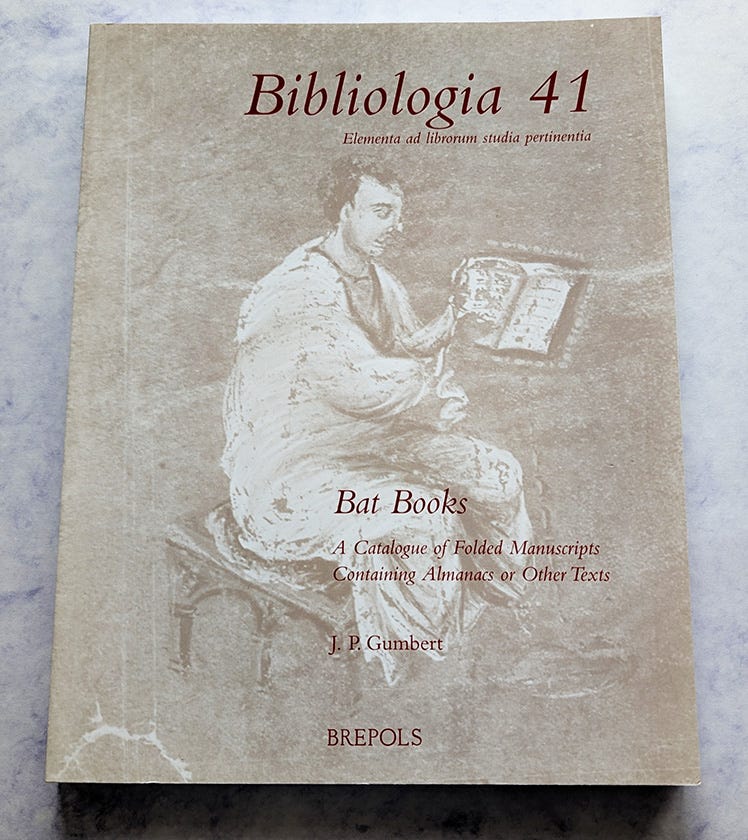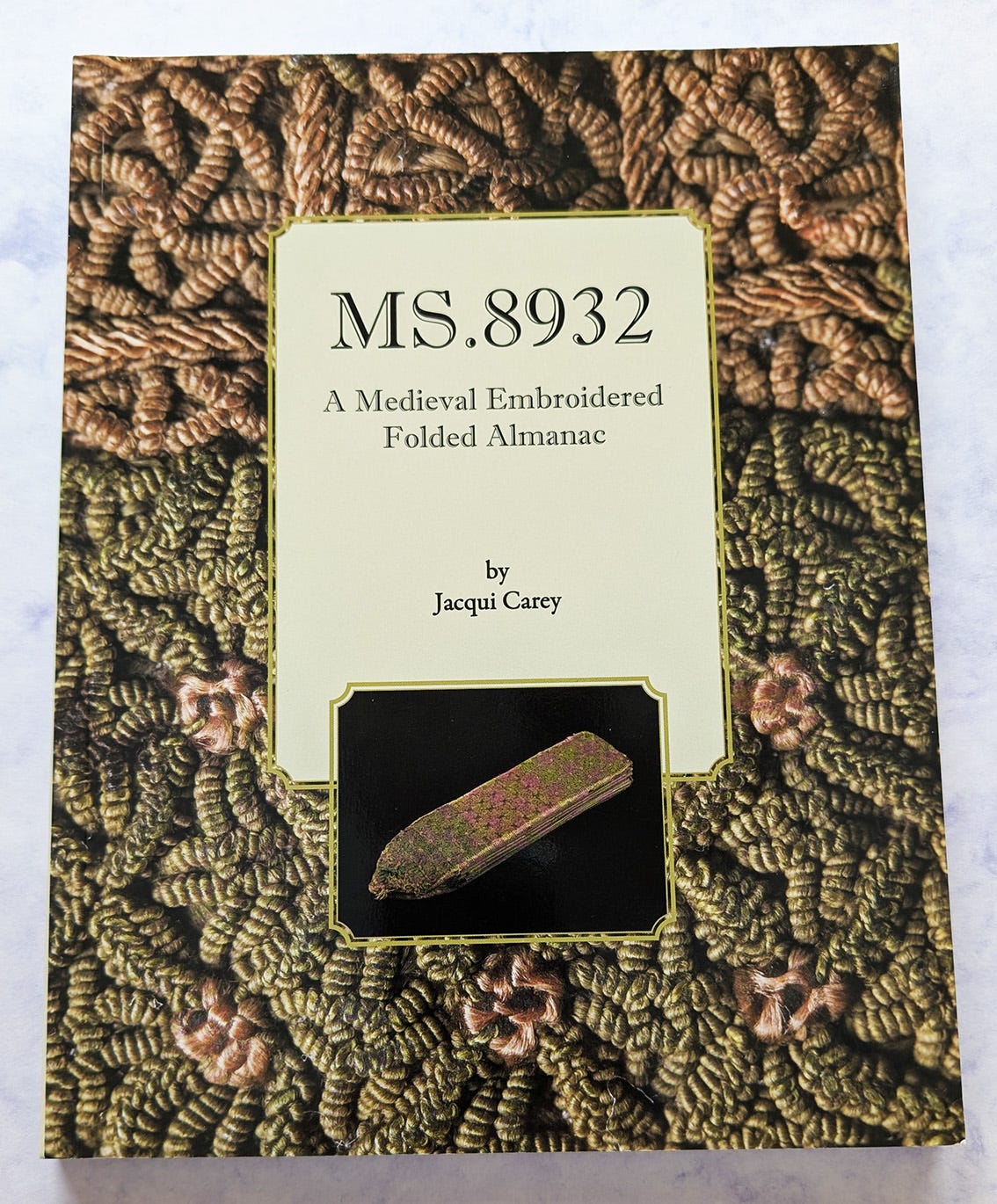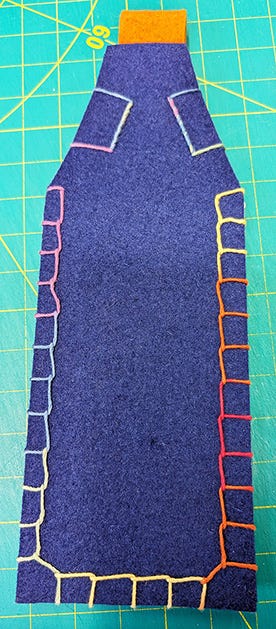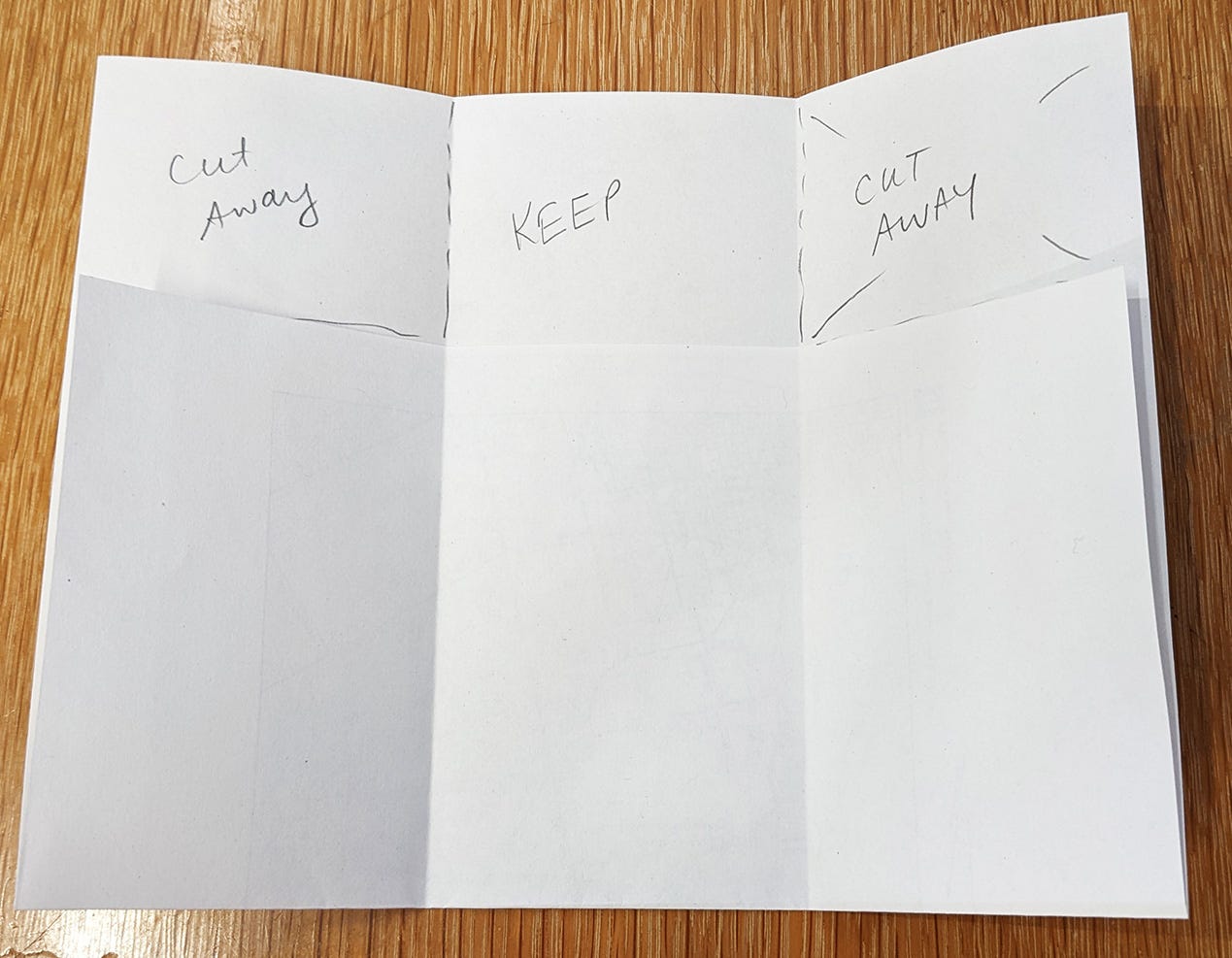"Bat" Books or Vade Mecum - the Medieval Folded Almanac
Geeky historical books forms for the win!
I was debating what book to feature this month and then I remembered I signed up for this webinar that will be held on March 28th, 2025.
Unfolding Concertina-Fold Almanacs: The Making of an Exhibition with Sarah Griffin, Lambeth Palace Library, & Megan McNamee, University of Edinburgh
If you want join the fun it’s free: register here
It seemed a no-brainer to do a feature on Bat Books or Vade Mecum.
First what is a vade mecum? It’s a portable almanac from a time when many books were chained to the library stacks! It’s similar to a girdle book in that it was designed to be held at waist height and could hang from a belt.
Calling this kind of book structure a vade mecum is a bit ahistorical as the term vade mecum really only started to be used in published books in the 1600s which is why book historians use Bat Book. The phrase is Latin and means ‘go with me’. It was often used in title of reference books with the idea being that the book was to be kept constantly at hand for easy consultation but these books are definitely the forerunners of the more standard book form that was a vade mecum in the 17th century.
Here’s how J.P. Gumbert defined them in his survey Bat Books. Bat books are medieval (1300-1500 CE) European books of a practical nature, small size, and peculiar construction.
The main characteristics of the construction follow these parameters.
Leaves are folded into a number of small compartments
Text cannot be read unless the leaf is unfolded
Each leaf has a tab on one edge
The tabs are gathered into a stub and fixed by stab sewing or sometimes rivets
To be read, the book must be held by the stub and the text on the face of the leaf, as they are successively unfolded is read from the outer (upper) edge towards the stub. (Basically upside down - hence the bat.)
Gumbert’s book can be found here - this book is pricey and isn’t a how-to really. It does have some folding charts that are useful (see pics at the end), but really I only added this book to this post because knowledge geeks like to know things. The book is a study of the extant examples of these books (fewer than 100) with detailed listing of the contents, the method of construction and the provenance. Most of the photos are black and white with a few colour plates at the end. Again to stress this is not a how-to book!
The links below can definitely lead to the proverbial rabbit hole! But so FUN!
Here’s a fun video from the Lambeth Palace library about folding up a bat book in preparation for their exhibition.
Another geeky deep dive - The Vade Mecum is mentioned in Patricia Spitzmuller’s presentation about Girdle Books at the Guild of Book Workers in 2000. Find that article here.
OKAY - So clearly I LOVE these books - I’ve made a few models and it’s on my bucket list to make one with content - not just blank pages!
Bat Books have a pretty narrow choice of how-to books sadly.
The one that I have included here is by the historian Jacqui Carey who studied the oldest intact example of an English embroidered binding - MS.8932 in the Wellcome Collection. Her book is available here. It’s full of glorious colour photos and enormous detail.
HOWEVER, it really focuses on the embroidery and how to re-create that because that is her speciality. It’s a wonderful book, but the specifics of how to get from a pile of papers plus your enthusiastic self to a finished book aren’t really there. It’s not a step by step guide for binding the book like it is for the embroidery, but I definitely recommend the book if you want to explore the history.
So you want to make one, don’t you??
When I started to explore this book structure, I used this online tutorial from Gina B Silkworks that I found helpful. You definitely don’t need the specialized tool she used. The video takes you through the basic steps of construction, but please don’t use cotton thread to sew the book together. I used hemp. I do like the braid she added to hold the book closed, but I probably would have used something more delicate than she did. But overall it gets the idea across and you have to add your own style to the final project.
When I made my model, I used tacket stitches to hold the tabs together and attach the belt loop. A tacket is basically a running stitch that is wrapped or packed. I used a heavy weight wool felt as my cover as I felt like that was a historically appropriate cover materials as felt existed then and I wanted a soft cover so the pages could unfold easily.
The whip stitch along the edge is 100% not historical, but I wanted a bit of colour to add to the cover.
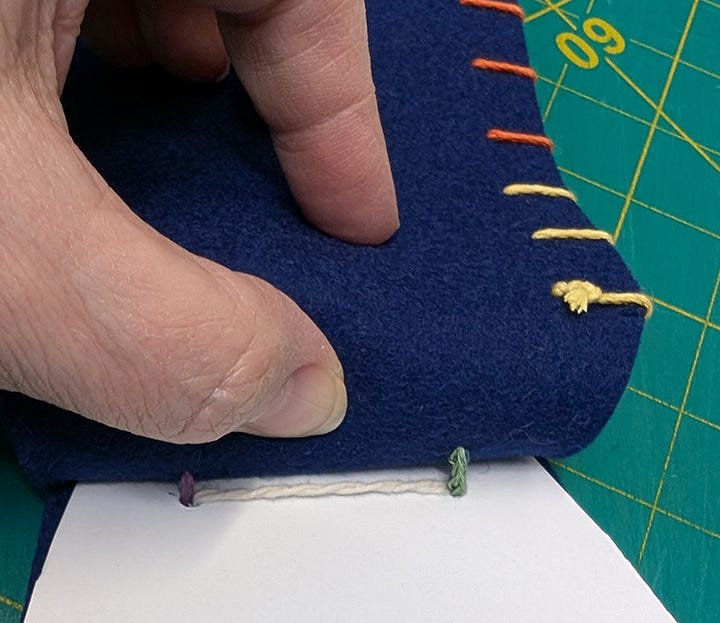
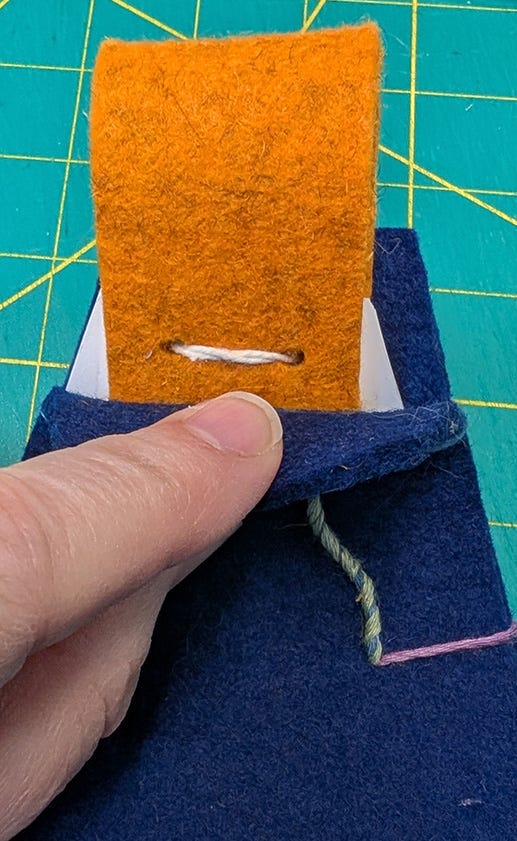
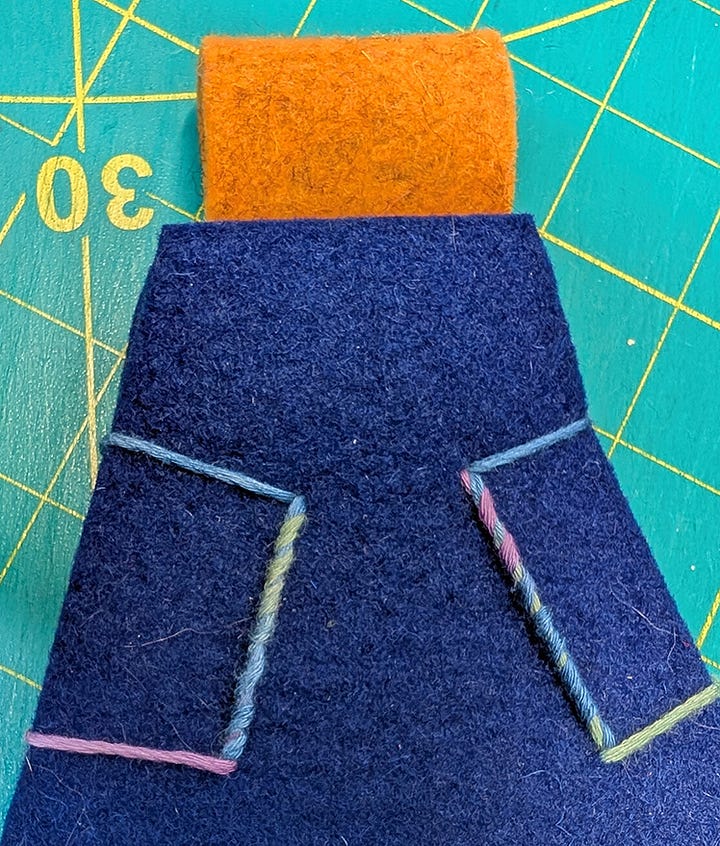
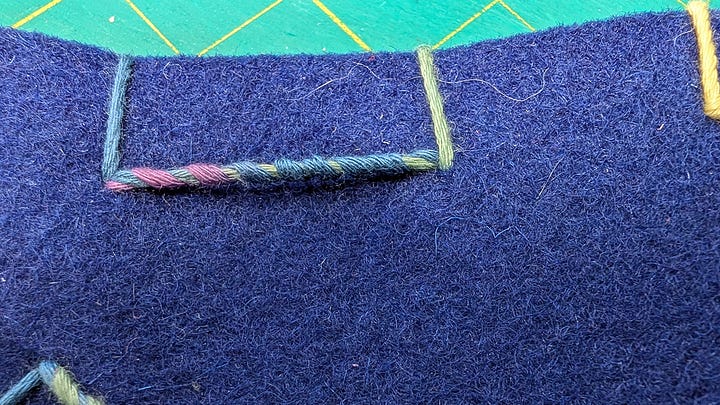
So I punched a set of two holes horizontally in the tabs in three spots - one near the top to attach the belt loop and two lower down for the long tackets. I did the stitch horizontally with a plain hemp thread. Then did the external stitches vertically using the same holes to avoid making too many holes in the tab. The stitches wrapped around the sides to hold the book together more effectively. I sewed left and right separately and knotted on the inside on the back.
For the pages, I used thirteen pages of 11” x 17” regular bond paper because I wanted the book to be large (much larger than many of the historical models).
I folded it simply, but did cut away the excess paper around the tab. Then I cut away part of the tab so that it narrowed at the top to support the belt loop more naturally. I folded the left side first and then the right, so that the second fold naturally covered the left completely.
I would probably just fold over the two tab areas that I cut away on any future builds which means I couldn’t narrow the book at the tab, but it would strengthen the tab. Because the historic books were made from parchment the material was very strong so making the tab much more thick wasn’t ideal and would have made sewing it together much harder.
See this example from a french book from 1338 that uses some very cool rivets and a metal loop.
Folding patterns from a couple examples in the Gumbert book!
I hope you enjoy this geek-y look at a rare historic structure. Let me know if you have any questions!




